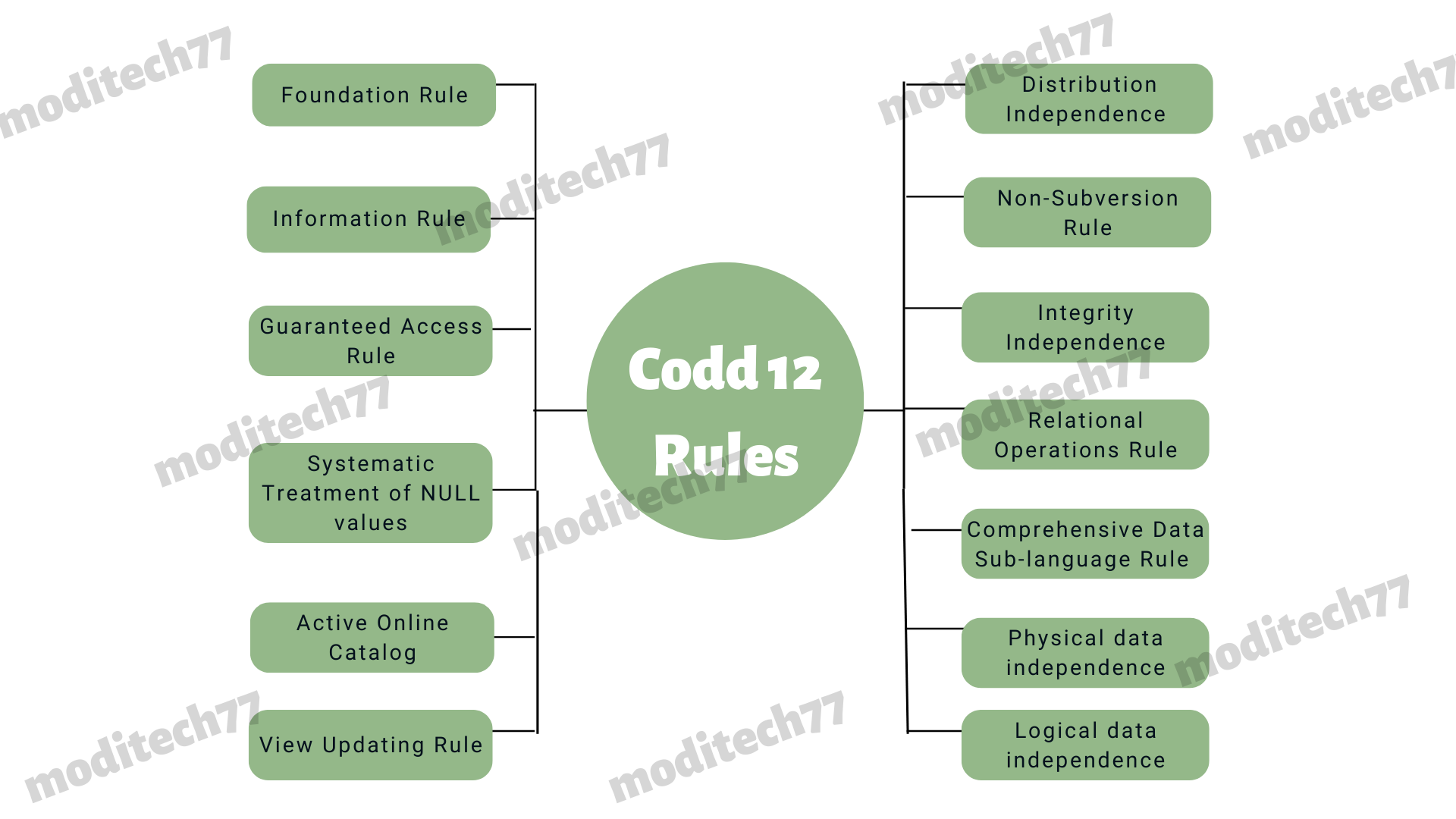Codd's 12 Rules:-
➺ If any database does not consist of Codd rules then it will be not called the correct RDBMS(Relational database management system).
➺ Every RBMS Database System should follow these rules of E.F. Codd.
➺ These rules were developed by Dr. Edgar F. Codd (E.F. Codd) in 1985. After a great research on the RDBMS.

◆ Codd's 12 Rules are given below:-
Rule 0: Foundation Rule
➺ A relational database system must manage databases totally through its relational capabilities.
Rule 1: Information Rule
➺ A database consists of information about user data or metadata. The information/data must be stored in the form of columns and rows in each and every cell of a table.
Rule 2: Guaranteed Access Rule
➺ In a Relational database, every data value must be logically accessible by using a combination of the table name, primary key, column name, etc.
Rule 3: Systematic Treatment of NULL values
➺ The Treatment of null values should be a systematic way. The null values in RDBMS are used for only missing information, empty values, or not applicable values.
Rule 4: Active Online Catalog
➺ The entry structure of the database must be stored in an online catalog which is known as Data Dictionary. So the authorized user can access data through the query language.
Rule 5: Comprehensive Data Sub-language Rule
➺ An RDBMS support several languages to access the database. we should use language that must be well having linear syntax and supports various operations such as data definition, view definition, data manipulation, integrity constraints, authorization, and transaction management operations (begin, rollback, and commit).
Rule 6: View Updating Rule
➺ The relational database system has different types of views and these all views can theoretically and practically be updatable by the database system.
Rule 7: Relational Operations Rule / High level insert, update and delete rule
➺ A relation database system must support relational operations rules such as high-level insertion, update, and deletion of data at each level of relation. It also supports the union, intersection, and minus operations.
Rule 8: Physical data independence
➺ To access data in the Database it should independent physically. Each data in the database should depend on other data. Any change in the location of the file does not affect on structure of the table.
Rule 9: Logical data independence
➺ Any change in the conceptual schema does not affect the external schema. Making changes in the structure of the database(table) does not affect the database file. Data in the database must be independent of its user's views.
Rule 10: Integrity Independence
➺ A database should be independent of the application that manages entire databases and the integrity of data should not affect the application level or external level. It also makes a database independent of the front-end application and its interface.
Rule 11: Distribution Independence
➺ The end user must not able to see a distribution of data over several locations. Users should always get the impression that the data is located at one site only. if any user is accessing the database, the user doesn't know that another user is also accessing the same database and the data they get are available at the same place only. Thus the data must be independent of each user to access it.
Rule 12: Non-Subversion Rule
➺ If RDBMS has a low-level language other than SQL then it should not subvert or bypass the integrity rule.
You might like this :-
○ History of computer
○Data Independence in DBMS
○Data Model in DBMS
○DBMS vs RDBMS